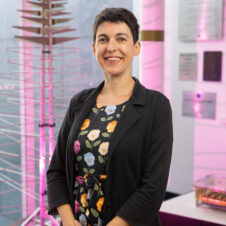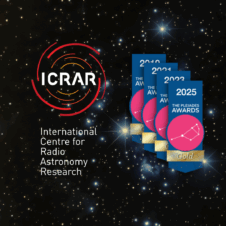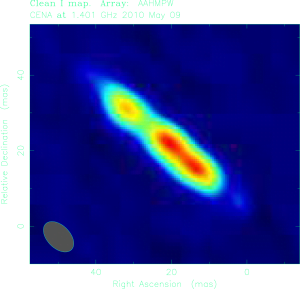
The centre of Centaurus A as seen using the newly linked trans-tasman array.
Six radio telescopes across Australia and New Zealand have joined forces to act as one giant telescope, linking up over a distance of 5500 km for the first time.
The link-up included new telescopes in Western Australia and New Zealand and data processing facilities at ICRAR in Western Australia.
This new Trans-Tasman radio astronomy capability is the result of collaboration between the International Centre for Radio Astronomy Research at Curtin University of Technology, CSIRO’s Astronomy and Space Science division, and AUT University in New Zealand. The telescopes are linked using a technique called Very Long Baseline Interferometry, or VLBI.
The VLBI array has already made images ten times more detailed than those of the Hubble Space Telescope and has been used to peer into the heart of a galaxy called Centaurus A. The array examined the jets of material that are ejected from the Active Nucleus of the galaxy at almost the speed of light, all powered by a super-massive black hole.
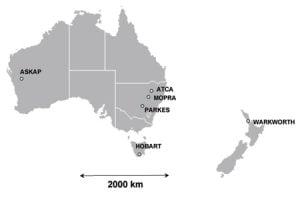
The locations of the individual radio antenna that were connected to create the telescope array. The distance between the two furthest points is approximately 5500km, a link-up that has never before been attempted in the Southern Hemisphere.
“This new VLBI capability between Western Australia and New Zealand allows us to produce very detailed images of cosmic radio sources, such as Centuarus A, which have not previously been possible at this level in the Southern Hemisphere,” said ICRAR Deputy Director and leader of the ICRAR VLBI team, Professor Steven Tingay. “The Square Kilometre Array will use an extension of VLBI technology.”
Showing Australia and New Zealand can link telescopes this way strengthens the two countries’ joint bid to host the international Square Kilometre Array (SKA) telescope.
“This successful linking of antennas shows Australia and New Zealand’s commitment to next-generation astronomical research and how seriously the Australasian consortium is taking the SKA bid,” says CSIRO SKA Director Dr Brian Boyle.
Australia and New Zealand are one of two regions shortlisted to host the SKA. The other is Southern Africa, with a decision on the final site expected in 2012.
The dishes in New Zealand and Western Australia are newcomers to the Australasian VLBI array. The New Zealand dish, near Warkworth in the hills of the North Island is operated by AUT University and is the first functioning research-quality radio telescope facility in New Zealand.
The new CSIRO dish in Western Australia’s red dirt country, inland from Geraldton is the first antenna of the Australian SKA Pathfinder (ASKAP) radio telescope.
The other telescopes used in the link-up were three CSIRO facilities in New South Wales and a University of Tasmania dish near Hobart, Tasmania.
Observing Centaurus for 10 hours, the telescopes took enough data to fill a stack of DVDs in their cases as high as a nine-storey building.
The resolution of the new image is 100,000 times higher than that of a ground-breaking radio image made by CSIRO last year, which is itself the most detailed image ever made of the whole galaxy.
“Centaurus A is 14 million light-years away,” said Professor Tingay “We’re zooming in on the black hole at the heart of this galaxy, to learn about how these systems work. Making the new image has been like photographing a pin head from 20 km away.”
ICRAR provided high speed data recording equipment for the ASKAP and Warkworth antennas, recording data at 4 Gbps for up to ten hours. The ICRAR team also provided the data processing facilities and image processing expertise that took the raw data from the 6 telescopes and converted them into images of the target objects. ICRAR possesses the only such facility in the Southern Hemisphere and the ICRAR VLBI team is considered an international leader in VLBI science and technology.
“This result demonstrates the power of very long baselines to do forefront radio astronomy,” says ICRAR Director Professor Peter Quinn. “It shows the strength that the Australian and New Zealand collaboration can bring to the SKA.”
“ICRAR is proud to have contributed to this link-up and we’d like to congratulate our team at Curtin University of Technology on their work. ”
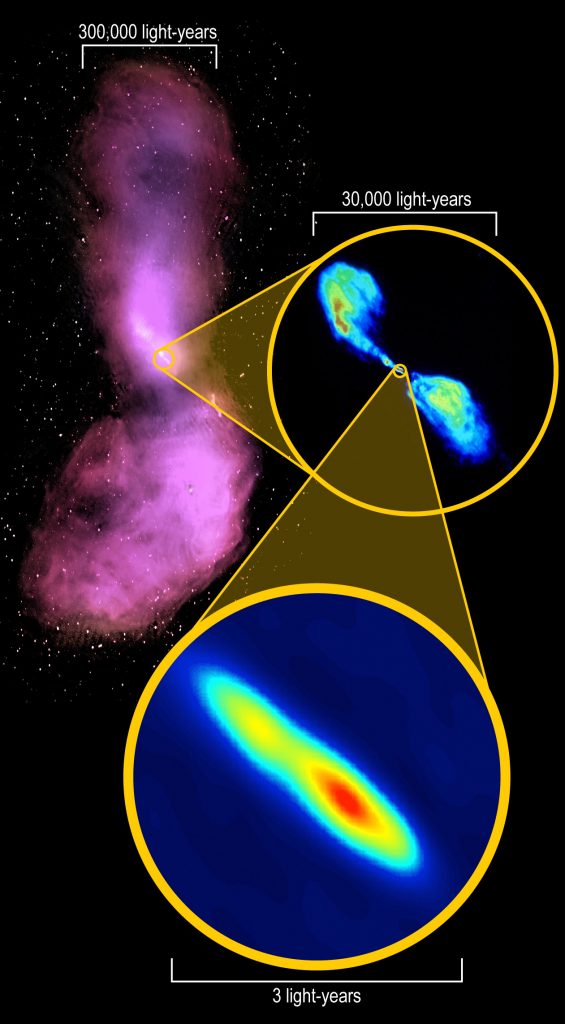
Zooming in to the heart of galaxy Centaurus A, 14 million light-years away. This composite image shows the entire galaxy, as imaged by CSIRO radio telescopes; radio emission from a central part of the galaxy, imaged by a US radio telescope; and the innermost part of the galaxy, imaged by the new network of Australian and New Zealand radio telescopes.
Image credit – Whole galaxy: I. Feain, T. Cornwell & R. Ekers (CSIRO/ATNF); ATCA northern middle lobe pointing courtesy R. Morganti (ASTRON); Parkes data courtesy N. Junkes (MPIfR). Inner radio lobes: NRAO / AUI / NSF. Core: S. Tingay (ICRAR) / ICRAR, CSIRO and AUT
